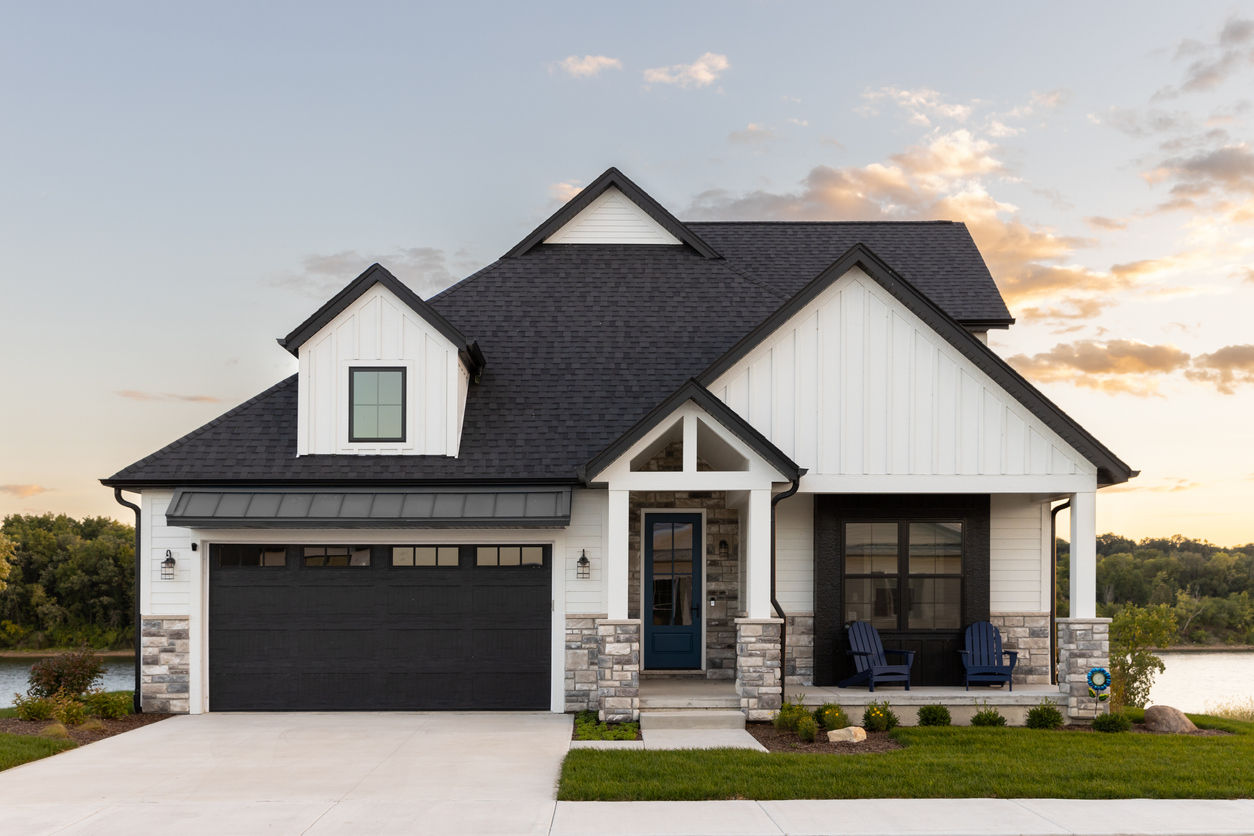Does Installing a Fence Increase Home Value?
When considering home improvement projects, homeowners often evaluate the return on investment (ROI) along with the functional and aesthetic enhancements to their property. Adding a fence is usually a go-to upgrade, especially in new construction developments.
But does adding a new fence increase home value?
You may be looking to enhance privacy, boost curb appeal, or secure your property line; whatever your reason, understanding the implications of adding a fence is crucial. Whether a fence adds value to a property depends on the material choice, neighborhood standards, comparable properties, and personal needs.
If you’re deciding if it’s worth undertaking a costly project like adding fencing to your home, it’s helpful to consider the benefits, costs, and potential downsides. Let’s explore what makes fence installation a worthy investment for homeowners.
How Much Value Does a Fence Add?
Installing a fence can be more than just a measure of security, safety, or privacy—it can also be a financially savvy decision.
On average, homeowners might see an ROI ranging from 50% to 70% on their fence installation, making it a moderately priced investment with substantial benefits for the value of your home.
Types of Fences and Their Impact on Property Value
Different types of fences contribute differently to property value and buyer appeal:
- Wood Fences: Classic and versatile, wood fencing is considered a higher-end upgrade, offering added privacy and security. However, they require some ongoing maintenance.
- Vinyl Fencing: Vinyl fencing can mimic the look of wood without annual maintenance. While expensive upfront, it’s cost-effective over time as it resists elements well, appealing to potential buyers who value ease of upkeep.
- Wrought Iron Fencing: Wrought iron fences enhance both security and aesthetics. They are durable and can significantly increase a property’s curb appeal, making them a viable option for homeowners in more urban areas.
- Stone or Brick Frences: Stone or brick fences are often the most expensive fence solution, reserved for luxury properties. While exceptionally durable, their cost makes them unobtainable for many homeowners.
- Chain Link Fencing: While less attractive than other options, chain link is affordable and functional, suitable for marking property lines and securing pets or children, especially in a backyard setting.
Comparison to Other Home Improvement Projects
When compared to other home improvement projects like kitchen remodels or landscaping, fence installation can be a less disruptive and more cost-effective way to add value to your home.
While it might not offer the dramatic increases in home value that major renovations can, it enhances other crucial aspects, like security, privacy, and the property’s overall aesthetic appeal. Many buyers prefer homes with fences and will even turn down a property that doesn’t meet their fencing needs.
In many instances, a new privacy fence can be the final touch that ties together the landscaping and architecture of a home, creating a private retreat perfect for families, pet owners, or anyone seeking a bit of solitude away from busy streets.
Benefits of Adding a Fence Beyond Value Increase
While the potential to increase home value is a compelling reason to install a fence, several additional benefits enhance a property’s living experience and appeal.
These advantages extend beyond the immediate financial return, contributing to a home’s desirability and functionality.
- Enhanced Privacy
One of the primary reasons homeowners choose to install a fence is to create a private space. A well-chosen privacy fence turns your yard into a private oasis, shielding you from the eyes of neighbors and passersby. A fenced yard is particularly appealing in densely populated or more urban areas where residential lots are close together. - Improved Security
A sturdy fence is a deterrent to trespassers and a barrier against wild animals. For families with young children or pets, fences provide a safe and controlled environment where they can play without the risk of straying onto busy streets. The added security is a substantial benefit that goes well beyond monetary evaluation. - Increased Curb Appeal and Aesthetic Value
A good fence can dramatically enhance the visual appeal of a property. The right fence complements your home’s exterior and landscaping. For homeowners looking to sell, a fence that adds to the aesthetic value of your home can make the property stand out in the real estate market, attracting more potential buyers. - Long-Term Savings and Maintenance
Depending on the materials chosen, a fence can be a low-maintenance addition that saves money over time. Vinyl fencing, for example, offers durability without the need for frequent painting or repairs. Over the long term, the cost savings from reduced maintenance can add up, providing economic benefits that complement the initial investment. - Environmental Benefits
Fences can also play a role in protecting your landscaping from environmental elements. They can block strong winds, provide shade in certain areas with trees, and even prevent erosion by stabilizing the soil. These environmental benefits help maintain the health and beauty of your yard, contributing further to your property’s overall appeal.
Cost Estimates for Installation of Yard Fences
It’s important to understand the potential financial outlay required for fence installation if it’s something you’re considering. Having a fence installed at home is a long-term investment, so take your time to consider your options.
Factors Influencing Costs of Home Fence Installation
The cost of building a fence can vary widely depending on several factors, such as the materials chosen, the size of the property, and the labor involved.
The choice of material is the most significant factor affecting the cost. For example, chain link fences are generally more affordable and provide a cost-effective solution for larger areas. In contrast, materials like wrought iron or high-quality wood are more expensive but offer greater aesthetic appeal and durability and are more sought-after by buyers.
The property’s size also has a significant impact on the cost of fencing. For example, wood fencing is much more affordable on a 20,000-square-foot lot than an acre. The perimeter length that needs fencing directly influences the total cost. Additionally, properties with difficult terrain, like steep slopes or obstructions, may require extra labor and materials, increasing the overall expense.
Furthermore, the labor market in which your property is located also impacts costs as you must pay a professional’s hourly rate unless you undertake a DIY project. Professional installation ensures that the fence is set up efficiently and correctly, which can be more economical in the long run by avoiding potential mistakes and repairs.
Lastly, remember to look into local regulations, any homeowner’s association rules (or CC&Rs), and permit requirements. Depending on your location, permits or specific standards may need to be met, which could affect the cost. For example, certain communities might require fences to be constructed of specific materials or to adhere to height restrictions.
Average Cost Estimates for Installing Yard Fences
The following prices are indicative and can vary based on regional pricing, price trends, and the specific requirements of your project.
- Chain Link Fencing: Costs approximately $9 to $30 per linear foot installed.
- Wood Fencing: Can range from $15 to $50 per linear foot, depending on the type of wood and the style of the fence.
- Vinyl Fencing: Generally ranges between $50 to $80 per linear foot.
- Wrought Iron Fencing: Typically the most expensive option, costing $30 to $100 per linear foot, depending on the intricacy of the designs.
Long-Term Considerations for Fencing Materials
While initial costs are important, it’s also crucial to consider the long-term financial implications of different fencing materials.
For instance, lower-cost options like chain link might have higher maintenance over the years than more durable choices like vinyl or wrought iron, which require less upkeep and can be more cost-effective over time.
When properly treated and well maintained, wood fences can stand the test of time and add a touch of elegance and class to your yard.
Considerations Before Building a Fence
Make sure you look into:
- Local Zoning Laws and Permit Requirements: Consult local zoning laws to understand the restrictions on fence height, materials, and placement. Additionally, obtain the necessary permits to ensure your project complies with local codes and avoids future legal complications.
- Homeowner Association (HOA) and Neighborhood Guidelines: Check with your HOA or neighborhood association for any additional regulations concerning fence aesthetics and materials to prevent potential conflicts.
- Neighbor Agreements: Discuss your fencing plans with neighbors, especially if the fence will border their property. This can lead to possible cost-sharing agreements and help clarify property boundaries, potentially avoiding disputes.
- Material Suitability for Climate: Choose materials that suit your local climate to ensure durability. For instance, in humid areas, opt for moisture-resistant materials like vinyl or treated wood, and in sunny regions, materials that resist UV damage are best.
- Design Vision: Have a clear design vision that suits your home’s style and meets your functional needs. Consulting with professionals can help refine this vision and ensure the end product is both functional and visually appealing.
Don’t just dive into building a fence; plan the project carefully. A fence can considerably impact a property’s appearance and usability. You want to select suitable materials that meet your needs and budget while matching the property’s aesthetic.
Select Materials that Work in Your Climate
Choosing the right materials for your fence is critical, particularly because different climates can significantly impact the longevity and performance of fencing materials. For example, materials like vinyl or pressure-treated wood can resist moisture and prevent decay in regions with high humidity.
In contrast, in areas with intense sun exposure, UV-resistant materials like wrought iron or brick will maintain their appearance and integrity over time.
Selecting the appropriate materials for your local environmental conditions ensures that your fence is durable and functional for years.
Have a Vision for the Design You Want
Planning the design of your fence is just as important as its practical function. Your fence should complement the architectural style of your home and enhance its overall curb appeal.
Consider the visual impact of your fence and how it integrates with the surrounding landscape. Consulting with design professionals can provide various options that suit your aesthetic goals and meet your specific needs, whether you’re looking for security, privacy or to enhance your property’s appearance.
Essential Addition or Expensive Luxury? Does a Fence Increase Property Value?
Installing a fence can significantly enhance the appeal of your home, but if your fence project is purely to add value to your home, it’s best to consider alternative projects with a higher ROI. However, beyond improving curb appeal, a fence provides the practicality of added privacy and security.
By carefully considering the type of fence that best suits your needs and ensuring compliance with local regulations, homeowners can enjoy a return on investment while achieving a private and secure living environment.
As you plan your fence installation, consult with professionals, consider the long-term benefits, and choose materials that will stand the test of time and weather. If adding value is your primary concern, consult with a real estate agent to discover whether buyers in your area strongly prefer homes with fences or if this is a feature they don’t value. FastExpert makes it easy to find experienced local agents who can give you the insights you need.
A thoughtful approach to fencing can be a defining factor in transforming your house into a coveted property on the market.





